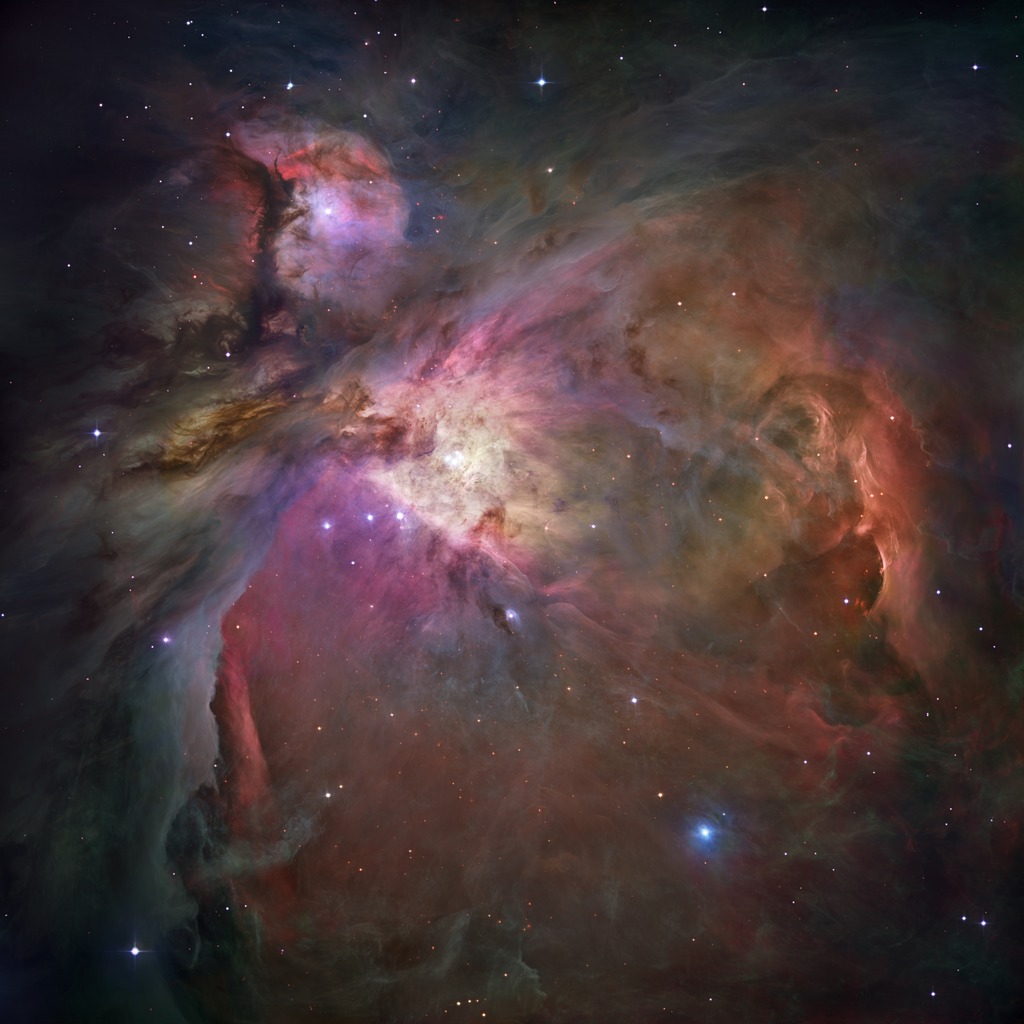Hubble and Spitzer Composite of the Orion Nebula

Hubble and Spitzer collaborate to show hundreds of baby stars and strong stellar winds shaping the gas and dust of the Orion Nebula
A composite image from NASA's Hubble and Spitzer Space Telescopes looks more like an abstract painting than a cosmic snapshot. The magnificent masterpiece shows the Orion nebula in an explosion of infrared, ultraviolet and visible-light colors. It was "painted" by hundreds of baby stars on a canvas of gas and dust, with intense ultraviolet light and strong stellar winds as brushes.
At the heart of the artwork is a set of four monstrously massive stars, collectively called the Trapezium. These behemoths are approximately 100,000 times brighter than our sun. Their community can be identified as the yellow smudge near the center of the composite.
The swirls of green were revealed by Hubble's ultraviolet and visible-light detectors. They are hydrogen and sulfur gases heated by intense ultraviolet radiation from the Trapezium's stars.
Wisps of red, also detected by Spitzer, indicate infrared light from illuminated clouds containing carbon-rich molecules called polycyclic aromatic hydrocarbons. On Earth, polycyclic aromatic hydrocarbons are found on burnt toast and in automobile exhaust.
Additional stars in Orion are sprinkled throughout the image in a rainbow of colors. Spitzer exposed infant stars deeply embedded in a cocoon of dust and gas (orange-yellow dots). Hubble found less embedded stars (specks of green) and stars in the foreground (blue). Stellar winds from clusters of newborn stars scattered throughout the cloud etched all of the well-defined ridges and cavities.
Located 1,500 light-years away from Earth, the Orion nebula is the brightest star in the sword of the hunter constellation. The cosmic cloud is also our closest massive star-formation factory, and astronomers suspect that it contains several thousand young stars.
For More Information
Credits
Please give credit for this item to:
NASA, ESA, T. Megeath (University of Toledo) and M. Robberto (STScI)
-
Project support
- Frank Summers (STScI)
Release date
This page was originally published on Wednesday, January 11, 2006.
This page was last updated on Thursday, October 10, 2024 at 12:26 AM EDT.
